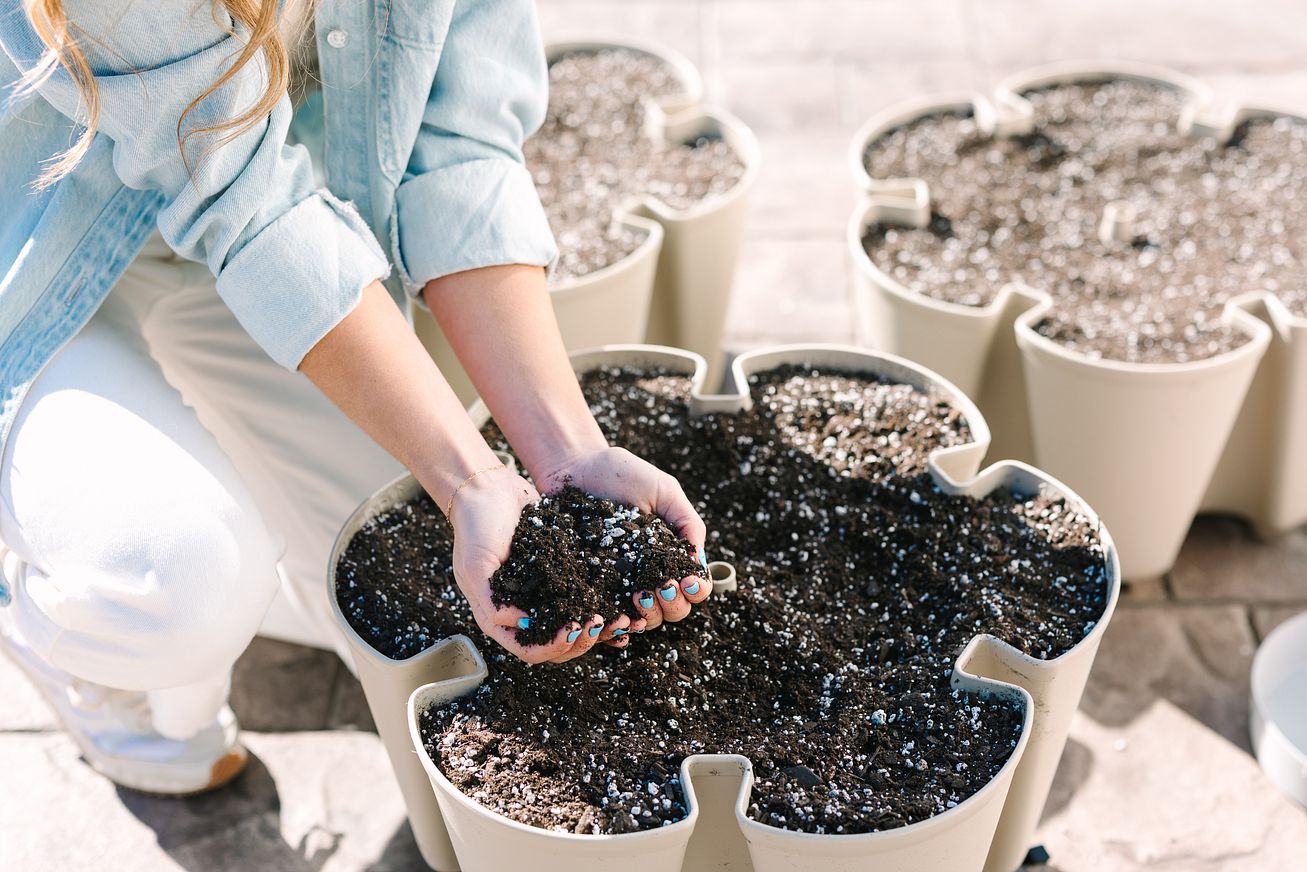Before your plants ever show signs of stress or success, your soil has already written the first draft of their story.
Learning how to read soil is like learning a new language, one rooted in texture, scent, and movement. You’ll be relying on your senses, a little curiosity, and a willingness to slow down and see what’s already there.
Let’s walk through the basic “literacy” of soil health: how to recognize a happy growing medium, spot potential trouble, and refresh your soil between plantings. If gardens were a story, the soil is the setting, and every good story starts here.
Start with the Prologue: Healthy Soil Characteristics
What does a well-written soil environment actually look like?
Even moisture from top to bottom — no overly soggy or bone-dry pockets.
Dark, rich color from organic content and composted materials.
Loose structure that’s easy to work
Earthy Smell straight from the bag — if it smells funky, swap it for fresh.
In a GreenStalk planter, where vertically stacked and networked pockets influence how air and water move, tuning in to these signs helps you stay one step ahead of potential problems.


Chapter One: Feel the Texture
Think of this as your soil’s handwriting.
To “read” soil by touch, grab a small handful from your planter and gently squeeze it in your palm.
Loose and crumbly soil that holds its shape briefly, then falls apart, suggests good structure and organic content. That’s a healthy sentence spelling out soil that thrives in a GreenStalk Planter.
Sticky or clumpy soil that stays balled up likely contains too much clay or is oversaturated. The message is muddy—literally, and can cause roots to be too wet and the shape of the tiers to warp outward.
Dry and dusty soil crumbles too easily and may lack water or organic matter. It’s a faded paragraph, lacking clarity and strength that communicates older soil that needs amending.
Reading soil by feel helps you understand texture and moisture retention. Good potting soils contain peat moss or coco coir, compost, vermiculite, perlite, aged forest product, pine bark, and organic matter like worm castings or guano, and usually additives for nutrients. Over time, you’ll begin to recognize how different crops respond to soil conditions and you can edit accordingly.
Chapter Two: Smell the Story
Every garden has its own atmosphere but your soil should never smell like bad news.
A quick sniff can tell you more than you think:
Healthy soil smells earthy, almost sweet, like fresh mushrooms or a forest after rain. This means there’s microbial life beneath the surface—an essential part of your planter’s unseen ecosystem.
A sour or rotten odor is a red flag. It often means water isn’t draining properly, creating anaerobic conditions where roots can’t breathe.
Especially with container gardening, this might mean it’s time to check for compacted soil, overwatering, or blocked drainage disks. Let your nose be your editor here. It’s remarkably good at catching errors!

Chapter Three: Watch How Water Moves
Water movement tells you a lot about your soil’s structure and readiness.
After watering, observe how quickly the water moves through your planter. You’re reading for pacing here, how smoothly the story flows.
If water absorbs evenly and exits the bottom tier at the speed of a trickle, rather than a gush, it’s safe to assume your soil is well-draining and holding moisture without drowning the roots.
If water pools on top or never reaches the bottom, your soil may be compacted or more likely, the draining holes could be clogged.
If it rushes through immediately, you may need to add compost or organic matter to improve retention, or the soil is too wet to absorb any more water.
Try rotating your planter occasionally using the GreenStalk Ultimate Spinner Base to ensure sunlight and moisture are evenly distributed throughout the tiers. This helps avoid plot holes (like dry pockets or uneven growth).
Check out our guide on How to Troubleshoot Watering a Vertical Garden for more information.

Refreshing the Page: Amending Between Plantings
Every planting season is a new chapter, and your soil needs an occasional rewrite.
Here’s how to amend your soil before your next planting:
Clear the space : Remove spent roots and plant debris. Give the soil room to breathe.
Mix in compost : A couple of inches of well-aged compost adds nutrients and improves texture.
Add organic amendments : Worm castings will benefit every tier, while mushroom compost and kelp meal are good additives to support healthy plants.
Top off as needed : Add a lightweight, container-friendly potting mix to replenish any volume lost to settling or root mass.
Time to plant : You can plant imediately after adding amendments, which is why it is beneficial to add them to the lower portion of soil (old soil) and then top with fresh.
For more in-depth advice, our soil reuse guide offers a full breakdown of how to build long-term soil health in your planter.
Epilogue: You’re Becoming Soil Literate!
Like finding your favorite genre, reading your soil becomes a habit, a seasonal rhythm that grows deeper with experience. The more you read, the more you’ll trust your instincts. And the more you listen to your soil’s signals, the more resilient your garden becomes.
So go ahead. Turn the page. Dig in. Let your next season be written in compost, composted in joy, and harvested with a little more wisdom than the last.
Need help interpreting your soil’s story? Browse our soil guides , or reach out with your questions. We’re always here to help!














